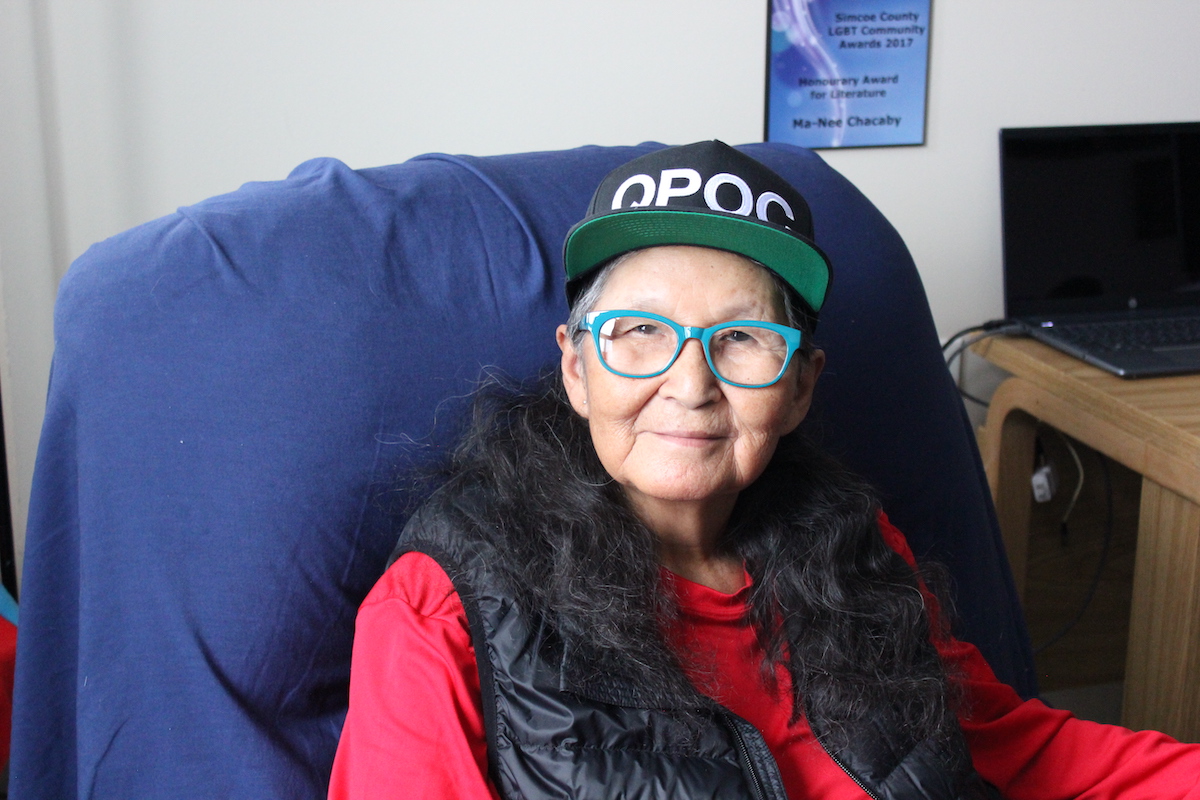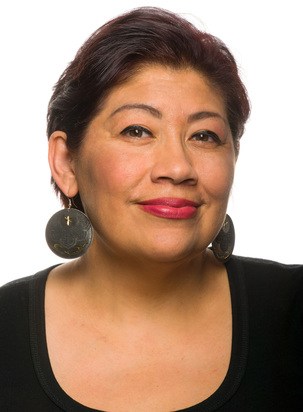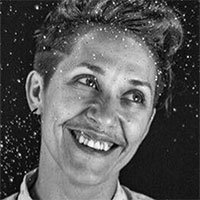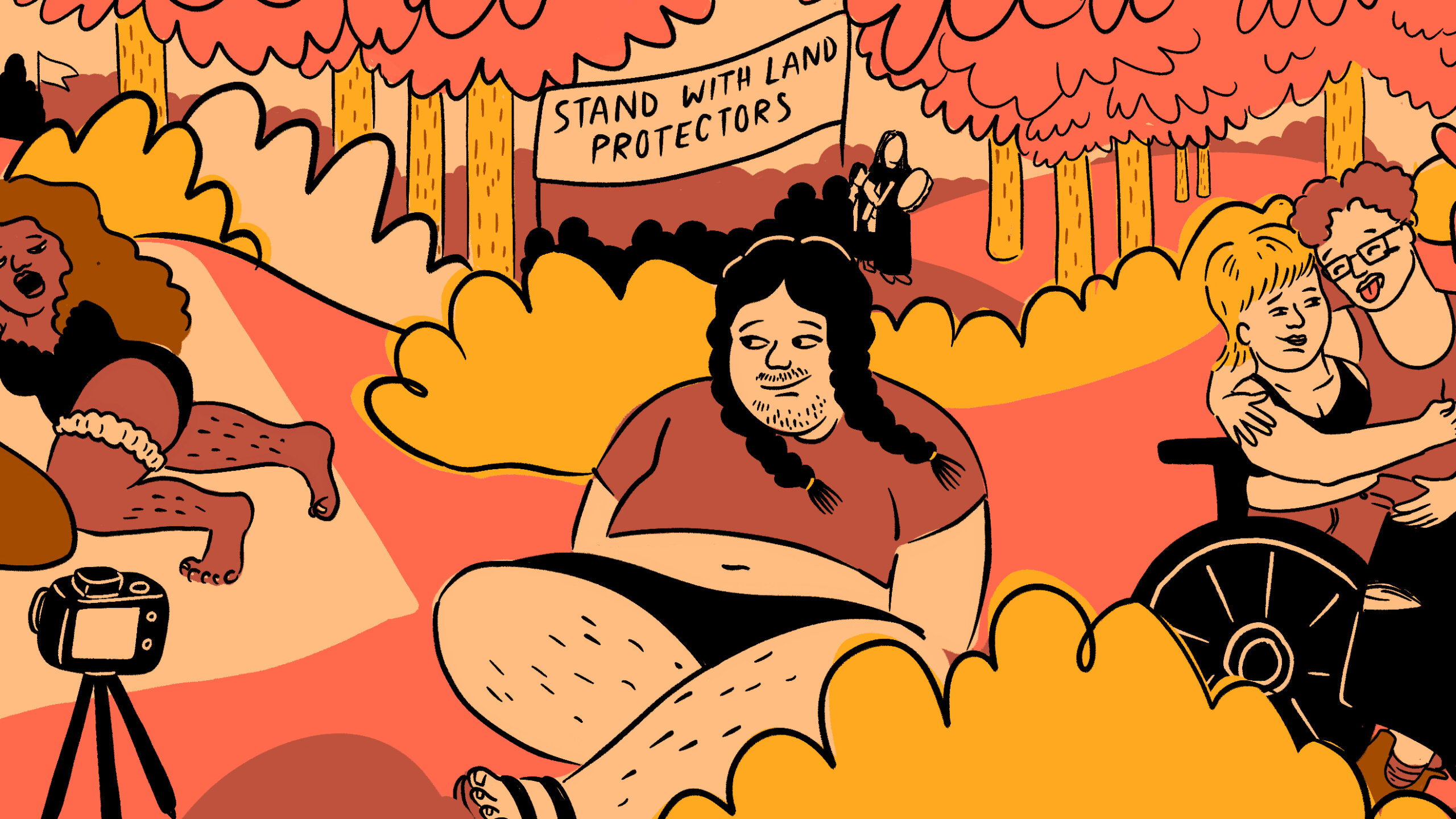This year marks the 50th anniversary of Xtra’s publisher, Pink Triangle Press, which was established in 1971 in Toronto, Canada. The aim of the press’ founding collective was to give a voice to the political and social concerns of gay men and lesbians and to advance the cause of sexual liberation. In November 1971, they launched the influential (and occasionally infamous) gay liberation newspaper, The Body Politic. Fifty years later, Xtra is exploring what sexual liberation means in the 21st century through the six-part series Protest and Pleasure by activist and writer Chanelle Gallant.
A note to readers: The story below contains mention of abuse and violence against Indigenous people. For those in crisis, the National Indian Residential School Crisis Hotline can be reached at 1-866-925-4419.
Have you noticed that when queer and trans people fight for their rights or, say, make a naughty music video that features a lap dance for Satan, the right-wing stokes fears that LGBTQ2S+ culture is “degenerate” and a threat to the “soul of the nation”? While these attitudes seem like the product of a bygone era, a surprising number of straight young people agree. According to a 2018 study by GenForward, fully 40 percent of people aged 18 to 34 in the U.S. who identify as straight believe that “the increasing acceptance of homosexuality in our society is causing a deterioration of morality.”
It’s truly wild that the folks who brought us deadly gender reveal parties and hate crimes still consider themselves paragons of moral purity, but here we are. The straights are not done with their homophobia and transphobia and until they are, we will not live—or lap dance—in peace. What would it take to end homophobia and transphobia, once and for all?
In this series I’m exploring how social, economic and racial justice issues affect sexual freedoms. My goal is to move us toward redefining sexual liberation as part of the fight for a fair and sustainable world and get people to take action alongside those on the frontlines. I’ve examined how the enslavement of Black people and the indenturing of people of colour’s labour has led to the racist institutions of police and border control and how these institutions limit everyone’s possibility for sexual liberation. This time, I’m looking at how the colonization of Indigenous land, lifeways and culture led to the creation of settler nation-states and the introduction of homophobia and transphobia.
We’re usually taught to view homophobia and transphobia as rooted in cultural intolerance and out-dated interpretations of religious texts that frame LGBTQ2S+ people as sinful and evil. This view sees sexual and gender oppression as the result of ignorance that will inevitably lessen over time as people come to a greater awareness and acceptance for sexual and gender diversity.
But just whose culture and whose religion are we talking about? Homophobia and transphobia are not part of traditional Indigenous cultures or religions on Turtle Island (also known as North America). A wide range of evidence shows that prior to colonization, many Indigenous cultures viewed gender and sexual diversity as customary and honourable.
As Bamby Salcedo touched on in my last column, we whitewash history when we skip over the fact that European colonizers and imperialists imported homophobia and transphobia and imposed it through criminalization, discrimination and violence. So, how can we end sexual and gender oppression without tackling its roots in the colonization of Indigenous land?
In many places in North America, June is Pride Month—and in Canada, it’s National Indigenous History Month, too. But in the celebrations that pop off all month, few, if any, mainstream LGBTQ+ organizations will make more than a token gesture toward the link between queer and trans liberation and the stolen land on which we celebrate Pride.
This is the case even though sexual diversity has been common among Indigenous peoples. According to a report that is part of the National Action Plan on MMIWG 2SLGBTQQIA+, “there are over 150 known words and terms in various Indigenous languages in North America that were used prior to contact to describe people who were gender diverse and LGBTQ+.”
Indigenous sexual diversity has included culturally specific gender fluidity and same-gender families, as well as extended kinship networks without nuclear families; plural marriage; women’s freedom to divorce and exert power outside of the household; communal households and land tenure.Yet the settler LGBTQ+ movement so rarely sees Indigenous self-determination as the pathway to sexual and gender liberation.
As I was writing this, the remains of nearly 1,000 people—many of them children—were discovered in unmarked graves outside two forced assimilation schools in British Columbia and Saskatchewan (often referred to as “residential schools,” and as “boarding schools” in the U.S.). Operated for over a century, these facilities were designed to eliminate First Nation, Métis and Inuit children and youth through assimilation into whiteness or, failing that, death.
According to the Truth and Reconciliation Final Report on Canada’s Residential Schools, children were subjected to such severe neglect and violence that death rates were “10.8 times higher than the national death rate for school-aged children.” Canadian and U.S. governments funded these institutions, authorized state agents to abduct tens of thousands of children from their homes and communities, continued to sanction the facilities even after abuses were known and funded the police to capture and return children who escaped.
All children were subjected to a complete assault on their cultural values and safety through forced immersion in a European settler culture. Countless kids at these institutions were what would now be called Two-Spirit, Indigiqueer, non-binary or LGBTQ+. Those children were especially singled out for torment and violence. Forced assimilation schools have been called the original conversion therapy, an attempt by the state and Christian churches to destroy Indigenous gender and sexual diversity and replace it with Euro-Christian heteronormativity.
“I did not understand why certain people seemed so threatened by me, as if I had some great power that could harm them.”
— Ma-Nee Chacaby
To this day, Two-Spirit, Indigiqueer, non-binary and LGBTQ+ Indigenous people face some of the highest rates of physical, sexual, emotional and intimate partner violence, hate crimes, physical assault and murder on Turtle Island. The Two-Spirit storyteller and scholar Joshua Whitehead (an Oji-nêhiyaw member of Peguis First Nation) writes, “We have already survived the apocalypse, this, right here, right now, is a dystopian present.”
To understand the history of violence against sexual and gender diversity on Turtle Island and how Indigenous people continue to combat its effects today, I spoke with Dr. Kim TallBear, a Dakota scholar and performer; Ojibwe-Cree Two-Spirit lesbian Elder Ma-Nee Chacaby; and Naty Tremblay, a Muskrat French métis Two-Spirit and trans artist, community builder and the executive director of the transformative justice organization Rittenhouse. What emerged from our conversation was a sense of the strength of Indigenous genders and sexualities to overturn colonial power.
Before speaking to Chacaby, I read her memoir, A Two-Spirit Journey: The Autobiography of a Lesbian Ojibwa-Cree Elder, and was amazed at how much she had done to nourish and foster Indigenous children, support homeless young women, protect her culture, share traditional teachings, create visual art and to develop the first AIDS awareness programs in the 1990s for Anishinaabeg. I wondered how many lives she has had a hand in saving, with precious little support. She is an Elder now, living on disability and seeking someone who can donate a kidney to her.

Credit: Courtesy of Ma-Nee Chacaby
Chacaby’s grandmother—who was born in the 1860s—told her that she was a Two-Spirit child when she was young. “She already knew what I was and what I was becoming,” Chacaby said to me. Later, her grandmother explained to her that, “you are a young person with two people living in your body, and people are going to pick on you and not accept you because Christianity has been changing a lot of people’s way of life…. A lot of people are forgetting their own birth.”
Instead of being recognized and valued, Chacaby was treated as the enemy. She describes in her book how after coming out on local television in 1988, she repeatedly had to run from groups of homophobic attackers while she was out walking on the streets on Winnipeg. She writes, “I did not understand why certain people seemed so threatened by me, as if I had some great power that could harm them.”
What, exactly, is so threatening about Indigenous sexualities and genders?
TallBear’s research (and I highly recommend her blog The Critical Polyamorist) reveals that Indigenous sexualities challenge the very fabric of colonial societies by connecting the body, gender and sexuality to spirit and land. What settler society calls “sexuality” is, among other things, a way that societies govern and organize our relationship to land, economy and political power.
Prior to colonization, most Indigenous peoples had a land base that was held collectively. Governance over the land was tied to practices of kinship which may have included extended family structures, a multiplicity of genders and plural and non-patriarchal marriage. Political power was tied to kinship networks (it was “in the house” so to speak) and a wide diversity of nation-specific Indigenous legal orders guided the resolution of disputes and addressed misconduct.
“Monogamous (heterosexual) marriage is only as old as the 19th century and it is a tool of settler Canada nation building.”
— Dr. Kim TallBear
Think about how heteropatriarchal nuclear families are about so much more than sexual partners—they are small household economies. So colonizers who wanted land, needed to eliminate Indigenous forms of communal land holdings that were managed through kinship. This meant, in part, attacking Indigenous genders and sexualities—all of them, not just the ones we’d now see as queer—as “deviant” and “uncivilized,” then using coercion and violence to impose heteropatriarchal nuclear family economies. Homophobia and transphobia are Euro-settler culture, but so is compulsory monogamy, misogynist slut-shaming, reducing humans to their sexualities and turning the household into an isolated and patriarchal space.
Speaking of Turtle Island, TallBear says, “monogamous (heterosexual) marriage is only as old as the 19th century and it is a tool of settler Canada nation-building. The state and the church created the nuclear family so that they could attach individual names to individual plots of land and advance the state’s land goals.”

Credit: Courtesy of Dr. Kim TallBear
European colonizers didn’t just bring monogamy—they completely overhauled sexualities. In addition to torturing and killing gender diverse people, they outlawed non-European and non-Christian forms of sexuality and family, including divorce, plural marriage and buggery and sodomy, and legally declared all women “not persons in matters of rights and privileges.”
Indigenous legal orders have had many ways of addressing serious harm but settlers in Canada imposed laws that made rape a property crime that only cisgender men could commit against a “chaste” cisgender woman. In practice, this meant that hardly anyone was protected against sexual assault. Some of these laws remained in place in Canada and the U.S. until the 1980s and 1990s.
In her brilliant book As We Have Always Done: Indigenous Freedom through Radical Resistance, Michi Saagiig Nishnaabeg scholar, writer and artist Leanne Betasamosake Simpson writes, “Indian agents perhaps caused severe damage in intimate Indigenous spaces because they were provided with the authority to punish Indigenous peoples for not adhering to heterosexuality, monogamy, and colonial gender expressions. Indian agents could punish disobedience by taking away children, by refusing economic relief in times of need, by taking away treaty and interest payments, and by formally charging Indigenous peoples and subjecting them to courts and criminalization.”
Homophobia and transphobia are not an accident or a misunderstanding that settler nations will naturally progress beyond. They are an important part of the colonial agenda to dispossess Indigenous people of their land and steal it. This is one of the primary reasons that we’re still stuck with homophobia and transphobia: for anti-Indigenous states—who believe in their exceptional moral superiority—they are settler weapons of war.
Generations of law and policies have created the conditions for an epidemic of missing and murdered Indigenous women, girls and Two-Spirit people; the dispossession of Indigenous peoples to build oil and gas pipelines; and disproportionate rates of poverty, incarceration and sexual violence, and chronic housing and drinking water crises on reserves. Why would LGBTQ+ people imagine that we can find freedom and rights from a colonial state that continues to perpetuate these injustices?
We cannot address homophobia and transphobia on Turtle Island without understanding and tearing down the ongoing systems and forces of colonialism. As TallBear says, “Love your relatives, not the state. My allegiance is to the planet, not to a nation-state. We must destroy U.S. and Canadian exceptionalism, the ideas [and] propagandist lies that these nation-states are good. When we dismantle those stories, we can create a narrative that brings everyone into a collective set of relations.”
Indigenous peoples and nations who have been rising against the colonial nation-state are building the pathway toward sexual and gender liberation. The self-determination of Two-Spirit, Indigiqueer, non-binary and LGBTQ+ Indigenous peoples and their nations is the solution to ending colonial homophobia and transphobia.

Credit: Courtesy of Naty Tremblay
“I’ve gained insights on Two-Spirit cultures by being with diverse Indigiqueers over the past 20 years,” Naty Tremblay says. “The dominant worldview is that there are two genders and that you don’t even have a spirit or a purpose. The deep medicine that Two-Spirit people offer is so much more than pronouns or a transition—it’s way bigger than that.”
Tremblay goes on to explain that sexuality, gender and connection to land are intertwined. “In Anishinaabe frameworks, there would be five kinds of gender categories… roles, responsibilities and relationships that your spirit invites you into. And a young person would get many opportunities to decide that for themselves. Being Two-Spirit or Indigiqueer is about sexuality, gender, and it’s about spirit.”
As Chacaby described it to me, “When I first heard the word [Two-Spirit], I thought, ‘Now I feel so right about everything, so complete.’ I came home to Thunder Bay and thought, ‘I am me. I am a Two-Spirit person.’ It’s a gift from Creator who wants me to walk with two spirits. It’s a sacred thing.”
More and more queer settlers are coming to recognize the limits of an overly biological and binaried view of gender and the power of Indigenous approaches to gender and sexuality. However, settlers can reproduce colonialism in many ways, such as appropriating the term Two-Spirit and imagining themselves as the heroes leading the way toward a queer future, rather than the ones who may be currently standing in the way of Indigenous self-determination and resurgent gender and sexual freedoms.
To move forward, Two-Spirit, Indigiqueer, non-binary and LGBTQ+ Indigenous people must lead the way. “Unfortunately,” Tremblay says, “Two-Spirit people need to be bridge builders in every community. It’s a great burden, but they do it with great dignity. They have developed deep skills on how to manage conflict, shape shift, forgive. That’s what we need now and what we’ll need in the future.”
I asked TallBear, Chacaby and Tremblay how settlers can responsibly support Two-Spirit, Indigiqueer, non-binary and LGBTQ+ self-determination.
“When Native people are fighting for their rights, come together and join them,” Chacaby says. “Show support!” Find out how you can show up for local struggles for land return, upholding treaties and self-determination. As TallBear explained it to me, “Decolonization is not individual. It is about giving land back, restoring land and life. An actual transfer of resources—actually, of relatives.” Your support can be political or financial, but always take direction from Indigenous people.
Tremblay says to support Indigenous land trust projects and places that centre their knowledge and wisdom. Give to mutual aid projects that do not rely on the state, as well as Two-Spirit land trust projects.
Finally, Tremblay asks us to “commit to deep transformative justice practice. Ask yourself: ‘Am I able to be with someone who is unravelling, in crisis, and build relationships?’ If we centre the healing of our most criminalized people, we will start to generate agreements together. Build skills to hold nuance and be with people when they are messy.”
As the (non-citizen) Cherokee Two-Spirit and queer writer, activist and performer Qwo-Li Driskill writes: “First Nations Two-Spirits are blooming like dandelions in the landscape of a racist, homophobic, and transphobic culture’s ordered garden. Through over 500 years of colonization’s efforts to kill our startling beauty, our roots have proven too deep and complicated to pull out of the soil of our origin, the soil where we are nurtured by the sacrifices that were made by our ancestors’ commitment to love us. And we are fighters in this long war to bring us all back home.”


 Why you can trust Xtra
Why you can trust Xtra


